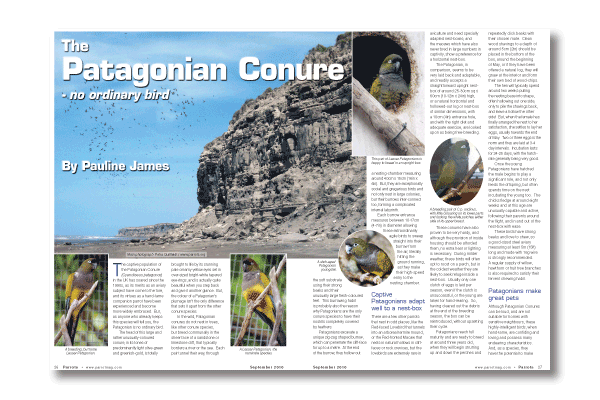
By Pauline James
The captive population of the Patagonian Conure (Cyanoliseus patagonus) in the UK has soared since the 1990s, as its merits as an aviary subject have come to the fore, and its virtues as a hand-tame companion parrot have been experienced and become more widely embraced. But, as anyone who already keeps this species will tell you, the Patagonian is no ordinary bird.
The head of this large and rather unusually-coloured conure, in its tones of predominantly light olive-green and greenish-gold, is totally brought to life by its stunning pale creamy-yellow eyes set in over-sized bright-white tapered eye-rings, and is actually quite beautiful when you step back and give it another glance. But, the colour of a Patagonian’s plumage isn’t the only difference that sets it apart from the other conure species.
In the wild, Patagonian conures do not nest in trees, like other conure species, but breed communally in the sheer face of a sandstone or limestone cliff, that typically borders a river or the sea. Each pair tunnel their way, through the soft substrata using their strong beaks and their unusually large flesh-coloured feet. This burrowing habit is probably also the reason why Patagonians are the only conure species to have their nostrils completely covered by feathers.
Read more in the magazine…








Parrot Chat
Buyers Guides
Breeding articles